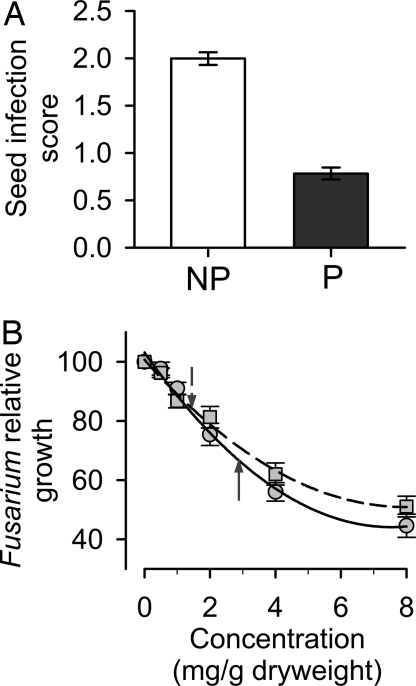Fig. 2.
Effects of capsaicinoids on Fusarium infection. (A) Seed infection scores (mean ± 1 SE) in fruit from nonpungent (white) and pungent (red) plants (n = 10 pungent and 10 nonpungent per year). On each plant we evaluated five random fruits each year. Seed infection scores were assigned using the standard series shown in Fig. 1A. (B) Relative growth rate of Fusarium as a function of capsaicin (circles, solid line) and dihydrocapsaicin (squares, dashed line) concentrations. All experiments were conducted in media that mimicked the nutritional composition of wild chili fruits. Growth was measured relative to growth in a control media that lacked capsaicinoids (± 1 SE, four isolates, six replicates per isolate per treatment). Lines are quadratic functions of capsaicinoid concentration (r2 > 0.99, P < 0.0005). Mean capsaicin and dihydrocapsaicin concentrations in fruit at our primary study, where we assessed fungal loads, were 2.85 mg/g dry mass (solid up arrow), and 1.43 mg/g dry mass (dashed down arrow), respectively.

